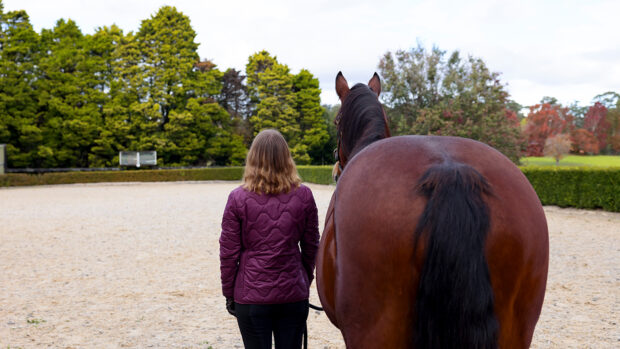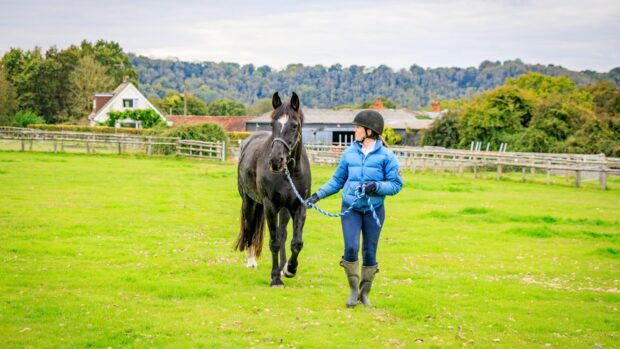Horse behaviour specialist Richard Maxwell believes that traditional methods such as lunge lines behind the horse or even brooms up its backside are not the answer to solving loading problems.
“If you go behind the horse, he’s wondering where the pressure is coming from and thinks backwards.”
Instead, Max uses a pressure halter and body language to show the horse that it is more comfortable to load than to refuse.
There is no pain and no shouting; really difficult horses might throw themselves on the ground, which is why he insists that vehicles must be parked on good footing such as that provided by a manege, but they have to learn to be accountable for their own actions.
“We treat the horse as an intelligent animal and give him the options. You can’t train through negative reinforcement: I’m not going to tell a horse he’s wrong, he knows he’s wrong because he’s uncomfortable.”
Max stresses that pressure halters must be used intelligently and to “make the horse accountable for his actions.”
He starts by schooling the horse in the stable, teaching him that the comfortable place to be is near the handler. The horse learns that to make himself comfortable, he needs to step towards the handler when pressure is applied. “Using the halterlike this gets their minds at your fingertips,” says Max.
A pressure halter should never be used to tie up a horse. If he pulls backwards and meets unrelenting pressure, it may lead to panic and injury.
When he moves on to actual loading, Max uses a long leadrope so that he has enough room to move out of danger. It is important to be aware of the horse’s body language and adjust your own – Max stands on the ramp to encourage the horse on, but does not look him in the eye or take the aggressive posture so often seen when frustrated owners attempt to drag their horses on board.
“When the rope is slack there’s no pressure, and when it’s tight, the horse is accountable. I’m the ‘comfort zone,’ so if I am on the trailer or lorry, that is where the horse should want to be.”
Max’s tips for loading are:
- Make sure the horse has safe, secure footing such as sand.
- “If the horse becomes angry, let him be angry on his own. If we allow ourselves to get into a fight, the horse is always bigger.”
- Do not turn the horse away from the ramp. “If you turn away, he’s scored a point against you. He can walk on to the ramp, he doesn’t need a run at it.”
- However long it takes, see it through – it is an investment for the future.
- Take partitions out to give more room to move around.
- If the horse gets “stuck”, back him up a little. “Be careful, because horses can suddenly explode out of it. This is whyyou need a long enough rope to allow you to step out of the way.”
- Unloading is just as important as loading. Get the horse used to standing for a while when the ramp has been lowered and waiting for you to tell him when to go down it.
- Make sure that the right moves are easy and comfortable for him and the wrong ones are difficult and/or uncomfortable.
- When you are schooling a horse to load, don’t stop as soon as you get him on board. Make sure he goes on and off happily several times.



